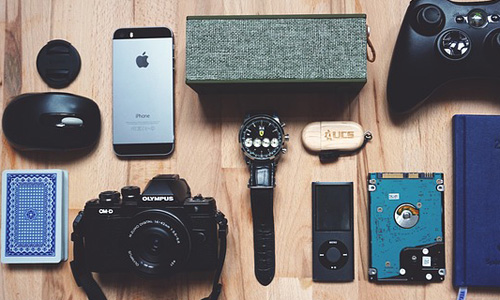Most of us live and work in a mobile world and in business reporting, there’s often a good chance that you will have to be on the road. But it’s remarkable how few people are prepared, past maybe having a case or bag for a laptop.
The more likely it is that you’ll be traveling—whether internationally, across the country, or even a few miles away to do an interview or just get out of the office for a bit—the more you need a digital go kit.
Go kits traditionally have been the staple of the well-prepared who either might be called upon to leave on short notice—first responders, for example. You have enough extra clothing, equipment, and other necessities to last you at least a few days. Having the kit saves precious time that would otherwise be taken up by trying to gather items together.
But there’s another use for a go kit. Even if you aren’t likely to head out in response to a natural disaster, having what you need at hand can mean more comfortable and convenient travel. For example, there were a couple of years where I had to travel professionally at least once a week. I’d only use a roll-on bag that fit in an overhead bin. Inside were duplicates of toiletries, cables, phone charger, extra clothing, and other things I’d likely need but could forget to pack in a morning’s rush.
I began to use the same philosophy anytime I expected to work outside of my home office. I have a laptop case in which I keep ready. Here are things I keep handy:
- computer and charger
- various USB cables to charge a phone or other device
- an outlet charger adapter
- thumb drive
- noise-cancelling headset that can also let me make phone calls
- USB-to-phono jack adaptor so I can use the headset with the phone (in case there’s a problem with the Bluetooth connection)
- portable external battery for any USB-powered device
There are other things you could add to such a kit. For example, adapters between the connectors your equipment uses and other popular types, a small set of screwdrivers and other necessary tools (also handy for the occasional repair to glasses), additional memory cards, a pair of digital recorders for redundancy to ensure you get that interview, microphones, and perhaps a spare pair of folding headphones if you use your phone for photography or video, adding a tabletop tripod (or a full one with an adaptor) to get a steady image.
The intention is to become as self-sufficient and prepared as possible so that you never think to yourself, “If only I had remembered.” And on the odd occasion that still happens, make note and expand your go kit accordingly in the future.











